The international competition for the new campus of the philological institute in Berlin was won by architects Candilis, Josic, Woods and Schiedhelm in 1963. The hyper-ambitious project, rooted in 1960s optimism, was a two/three floors mat building, originally 350,000 square metres wide, composed by an expanding grid and based on a modular scheme. The project had the purpose of transforming the campus in a deeply interconnected city with internal streets, squares, courtyards and multiple walkways on the model of an Arabic Medina. The articulation of several spatial and constructive elements, always composed in a different fashion through the developing of the scheme, provided an incredible variety of ambiences within a controlled modular system. A strong five colours scheme, red, yellow, green, blue and purple, completed the spatial richness and was used for orientation purposes.

The main concept behind the proposal was a radical rethinking of the educational system with an accent on flexibility and evolutivity of space as well as a literal spatial translation of the idea of horizontal communication among students and teachers. Classrooms, departments and facilities were to be decentralized and distributed on the grid without any hierarchical organization.
Construction techniques were to be as radical as the main design concept and reinforced the flexibility of the scheme through pre-fabrication and lightness. Famous French engineer Jean Prouvé was behind the conception of the structural system (concrete-encased steel columns, I-section steel beams and prefabricated reinforced concrete slabs) and the detailing. The modules of the Cor-ten steel façade should also have been easily demountable and rearranged, expanding the idea of flexibility from the interior spaces to the exterior appearance of the building.
Even from the early stages of construction in 1967, the fascinating scheme proved all its complications, revealing the complexity to organize a university in a maze-like system. Even the avantgardist technical solution of the façade lead to fast deterioration as the thin modules let water and air pass through and quickly rust the exterior skin.
In 1997, Foster+Partners won the competition to restore the building and add a library. The office intervened profoundly in the deeply damaged structures but substantially respected the building’s aims and logic while improving its functioning. A further addition has been made in 2004 by Florian Nagler Architects, proceeding with the same building logic, but correcting its technical construction and distributional functionality.
![Free University Berlin, competition, explanatory diagram, building concept, 1963. [Shadrach Woods, Candilis-Josic-Woods: Building for People (New York: F.A.Praeger, 1968), 208]](https://socks-studio.com/wp-content/plugins/jquery-image-lazy-loading/images/grey.gif) Free University Berlin, competition, explanatory diagram, building concept, 1963.
Free University Berlin, competition, explanatory diagram, building concept, 1963.[Shadrach Woods, Candilis-Josic-Woods: Building for People (New York: F.A.Praeger, 1968), 208]
![Candilis-Josic-Woods, circulation diagram, Free University competition entry, 1963. [Shadrach Woods, Candilis-Josic-Woods: Building for People (New York: F.A. Praeger, 1968), 209].](https://socks-studio.com/wp-content/plugins/jquery-image-lazy-loading/images/grey.gif) Candilis-Josic-Woods, circulation diagram, Free University competition entry, 1963.
Candilis-Josic-Woods, circulation diagram, Free University competition entry, 1963.[Shadrach Woods, Candilis-Josic-Woods: Building for People (New York: F.A. Praeger, 1968), 209].
 Competition diagram showing circulatory patterns, primary and secondary stems. [Gabriel Feld and Peter Smithson, Free University, Berlin: Candilis, Josic, Woods, Schiedhelm. Exemplary Projects, 3, (London: Architectural Association, 1999), 20].
Competition diagram showing circulatory patterns, primary and secondary stems. [Gabriel Feld and Peter Smithson, Free University, Berlin: Candilis, Josic, Woods, Schiedhelm. Exemplary Projects, 3, (London: Architectural Association, 1999), 20].
![Aerial view, Free University, soon after completion, 1974. [Gabriel Feld and Peter Smithson, Free University, Berlin: Candilis, Josic, Woods, Schiedhelm. Exemplary Projects, 3 (London: Architectural Association, 1999), 16].](https://socks-studio.com/wp-content/plugins/jquery-image-lazy-loading/images/grey.gif) Aerial view, Free University, soon after completion, 1974.
Aerial view, Free University, soon after completion, 1974.[Gabriel Feld and Peter Smithson, Free University, Berlin: Candilis, Josic, Woods, Schiedhelm. Exemplary Projects, 3 (London: Architectural Association, 1999), 16].
 Entrance to Free University, Berlin, from Thielallee, 2011.
Entrance to Free University, Berlin, from Thielallee, 2011.(Photograph by Dina Krunic – see on ‘Further reading’ section).
![Ramp within primary stem. [Photograph by Charles Tashima, in Gabriel Feld and Peter Smithson. Free University, Berlin : Candilis, Josic, Woods, Schiedhelm. Exemplary Projects, 3 (London: Architectural Association, 1999), 83].](https://socks-studio.com/wp-content/plugins/jquery-image-lazy-loading/images/grey.gif) Ramp within primary stem.[Photograph by Charles Tashima, in Gabriel Feld and Peter Smithson.
Ramp within primary stem.[Photograph by Charles Tashima, in Gabriel Feld and Peter Smithson.Free University, Berlin : Candilis, Josic, Woods, Schiedhelm. Exemplary Projects, 3 (London: Architectural Association, 1999), 83].
Further reading:
“The Free University Still Embodies The Social And Architectural Dynamic Of The 1960s“, on Architects Journal
“The Radically Modular Free University Of West Berlin” on Uncube Magazine
“The Groundscraper: Candilis Josic Woods and the Free University Building in Berlin“, an essay by Dina Krunic
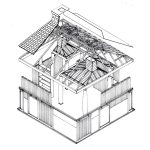
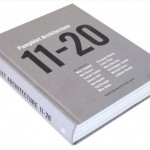
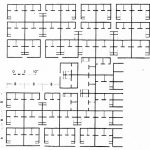
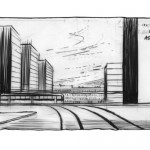
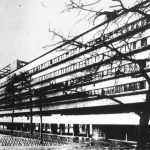
Leave a Reply